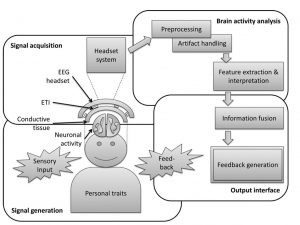Nobody likes being stuck in traffic. However, with everyone trying to get into the same place at the same time, traffic inevitably becomes a source of frustration for many people.
However, visibly angry drivers are not the only thing to watch out for. A Chinese study from Shenzhen University, uses driving simulations, eye tracking technology and electroencephalogram (EEG) to determine the effects of traffic congestion on a driver’s aggression and behavior. The results are not pleasant.
How is driving affected?
The study found that drivers that leave traffic conditions exhibit driving patterns such as:
- Steering and changing lanes 3 times as often
- Increasing braking and speeding
- Less time is seen looking at the dashboard and peripheral areas
- Frequency of looking around decreases
This results in the driver getting tunnel vision, being less likely to check during lanes changes despite increasing frequency, and speeding. These behaviors are often done unintentionally.
How was information collected with eye tracking
Eye tracking technology can track the movement of the eye and measure its gaze. By shining a beam of infrared light in the eye, a reflection from the eye is created. A camera records this reflection and the program calculates the center of the eye and determines the gaze angle, which is then used to determine where a person is looking at any point in time. In this study, the user’s eye movements were tracked for blinking, fixation, and how often the eye shifts.
This study found that drivers after encountering traffic did not check their peripheral vision as often, fixation in the frontal view, and decreased situational awareness as a result.
The video below explains how eye tracking technology works in detail.
How EEG was used to collect information
EEG detects electrical activity in the brain using small metal discs attached to the head. These discs record the frequency and intensity of the electrical signals released from the brain, and provide data which can then be compared.
Drivers after traffic conditions, showed signals of lower intensity when driving which indicated that their perception of speed was lowered.
The diagram below is a simplified diagram of the EEG collection process.

Signals from the brain are acquired and recorded in the headset. After the algorithm removes the noise, it processes it into relevant feedback on brain activity. Graphic created by: Vojkan Mihajlovi
Implications
Drivers after encountering traffic conditions would have less situational awareness, speed perception, and engage in more risky behaviors.
Avoiding the pitfalls
Public efforts such as regulation (increasing signage and lower speed limits) can help reduce impacts from risky behavior. In addition, educating new drivers on strategies to reduce aggression for themselves and other drivers can be used to increase overall road safety in the long term.
Current drivers can also make roads safer by reducing factors that increase frustration and brush up on appropriate handling of risky behavior from other drivers is just as important.
While eliminating traffic is not possible at this moment in time, sticking to safe driving and staying calm is.
-Michelle Huynh
